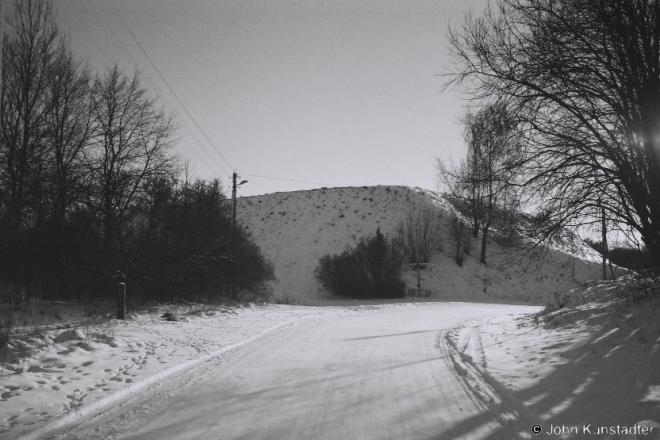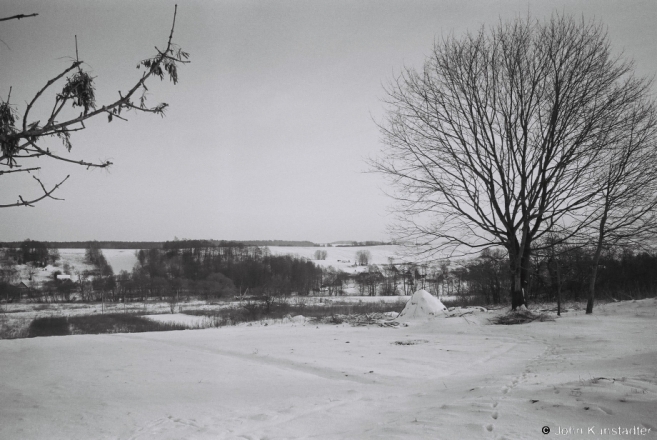From a mid-January photo survey of the patrimony of north-eastern Valozhyn District. З вандроўкі па спадчыне паўночна-усходняй Валожыншчыны.
Although only a few miles from the busy Mjensk-Vilnius highway, the tranquil village of Losk (population about 400) is now well off the beaten path. Yet from the late 15th century until the partitions of Poland at the end of the 18th century, Losk was the seat of a series of powerful magnates in the Grand Duchy of Lithuania and subsequently the Polish-Lithuanian Commonwealth. These magnates’ power was reflected in the castle fortress which stood on a huge man-made mound at the southern end of the village. The fortress was demolished by the Russian imperial authorities after the partitions. The mound still stands in mute testimony to what once was.
Losk was the site of the second printing press of the renowned 16th-century Protestant anti-Trinitarian preacher, theologian and philosopher Simon Budny (Сымон Будны), one of the key figures in the consolidation of literary Belarusian. At this press in 1574 Budny published his translation of the New Testament with commentaries as well as several anti-Trinitarian works, all of which garnered interest throughout Europe.
Losk castle mound 2014. Замчышча ў Лоску, студзень 2014 г.
View from Losk’s main street across the narrow bottom-land (lashchyna – лашчына) from which the village apparently gets its name. Выгляд з галоўнай вуліцы вёскі праз лашчыну (адкуль, здаецца, вёска атрымала сваю назву).


has anyone ever tried to excavate the mound?
Yes, at the beginning of the 1990s.